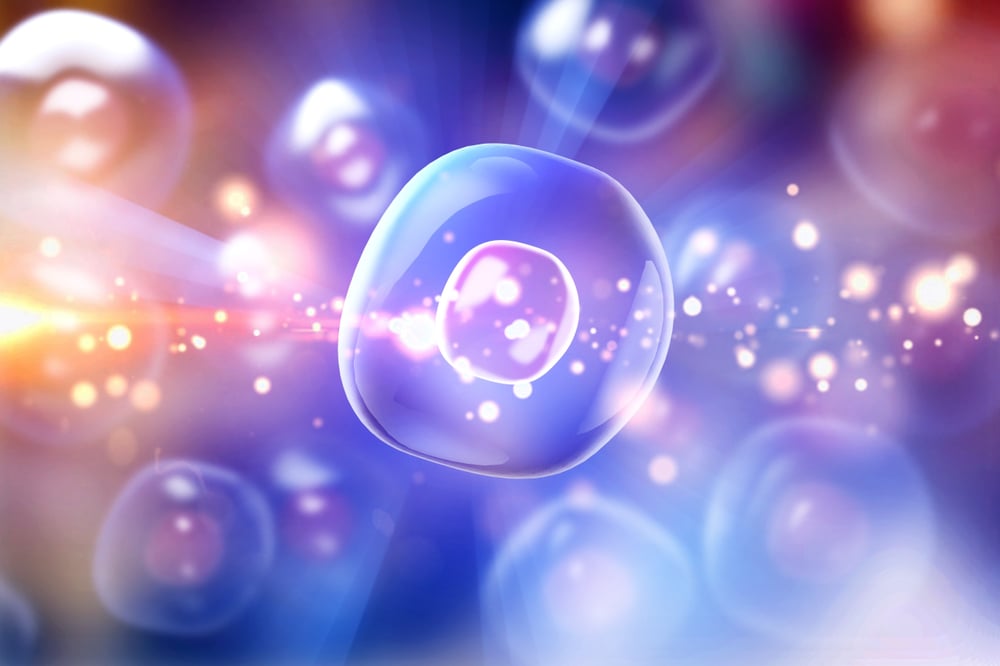Posted 14 January 2025 - 05:00 PM
In a preprint study, scientists from Lifespan Research Institute and the Buck Institute for Research on Aging have published their findings that Urolithin A, a molecule that has garnered a lot of attention in the longevity field, potently reduces senescence-related markers in human fibroblasts [1].
Senolytic versus senomorphic
Cellular senescence is a well-documented aspect of aging [2], but the best strategy to counter it remains a question. Senescent cells play an important role in development, wound healing, and anti-cancer defenses, but with age, as their numbers grow, they start doing more harm than good.
While even in aged tissue, the relative prevalence of senescent cells in the tissue is usually small, they wreak havoc by emitting damage-associated molecular patterns (DAMPs) as well as the SASP. These trigger excessive immune response and are documented to contribute to the systemic, age-related inflammation known as inflammaging.
Clearing out senescent cells, something that the immune system should naturally do, forms the basis of the senolytic approach, which dominates today’s research in academia and biotech. The task is tricky, however, particularly because senescent cells are highly heterogeneous and are also full of harmful molecules that are released when the cell dies. One enticing alternative approach is the senomorphic one, which involves altering senescent cells in a way that would leave them in place but make them less harmful.
Urolithin A might help heal senescent cells
Urolithin A is a molecule that has gained popularity in the longevity community after demonstrating several healthspan and lifespan benefits in animal models and humans. This metabolite is produced by our gut bacteria from precursors found in foods like nuts, berries, and pomegranates, and it has been shown to decrease inflammation and improve muscle function in humans. In animal models, it led to significant increases in lifespan. For instance, in a small study from the Buck Institute for Research on Aging, Urolithin A produced a 19% increase in lifespan in mice, which is among the best results for any intervention [3].
In this study, the researchers induced two types of senescence in human fetal lung fibroblasts: one triggered by the chemotherapy drug doxorubicin and another by cellular division (replicative senescence). While the treatment had little effect on the two popular senescence markers p16 and p21, it did significantly reduce the secretion of the major pro-inflammatory SASP factors interleukin 6 (IL-6) and interleukin 8 (IL-8) as well as the expression of the corresponding genes in both models of senescence.
This translated to lower levels of paracrine senescence, which occurs when SASP from senescent cells induces senescence in neighboring cells. The researchers cultured healthy fibroblasts in the presence of media collected from either control senescent cells or those treated with Urolithin A and found that the latter scenario caused less paracrine senescence.
“Urolithin A has generated a lot of excitement in the last several years based on its potential use as an anti-aging therapeutic,” said Dr. Julie Andersen of the Buck Institute for Research on Aging, a co-author of this study and the earlier one showing that Urolithin A increases lifespan in mice. “This includes clinical data demonstrating its ability to slow loss of muscle function in older individuals. Our studies demonstrate a novel mechanism of action for the compound – suppression of chronic inflammation associated with cellular senescence, a major contributor to multiple age-related diseases. This offers a novel approach for treating a wide range of chronic diseases which could improve overall quality of life in later years.”
The mechanism
The researchers went one step further and tried to elucidate the potential mechanisms behind these effects. Cellular senescence has been linked to cytosolic DNA, which are fragments of DNA floating around in the cytosol instead of staying where they belong: in the nucleus and in mitochondria. Since it can be of viral or bacterial origins, cytosolic DNA is recognized by the cell as a sign of invasion, and the alarm is raised via the cGAS-STING pathway, which drives inflammation.
Urolithin A significantly decreased the abundance of cytosolic DNA in the treated cells. The researchers suggest that this might have something to do with Urolithin A’s ability to induce mitophagy [4], the process of eliminating unhealthy mitochondria. Damaged mitochondria leak DNA, and lowering their burden would be consistent with the observed reduction in cytosolic DNA.
“We discovered that Urolithin A, a remarkable gut-derived metabolite significantly suppresses the expression and release of pro-inflammatory SASP and DAMP factors,” said Dr. Amit Sharma of the Lifespan Research Institute, the study’s lead author. “This effect is driven, at least in part, by reducing cytosolic DNA release and dampening the cGAS-STING signaling pathway – a central player in chronic inflammation.”
Is the hype real?
Urolithin A has been making a lot of buzz lately, given its availability as a supplement, which makes this pre-print particularly timely. “This is an exciting study as it opens up the possibility of thinking how gut metabolites can influence inflammation by modulating the SASP,” said another Buck researcher, Dr. Pankaj Kapahi, who was not involved in this study.
“The growing excitement around Urolithin A as a potent anti-aging molecule is well-founded, and our findings take this a step further, unveiling the precise mechanisms behind its anti-inflammatory power,” Sharma noted. “This breakthrough provides a deeper understanding of how Urolithin A combats the hallmarks of aging.”
Importantly, genetics dictate how we metabolize Urolithin A. According to one study, only 40% of people are able to produce it from natural precursors in meaningful quantities [5]. However, there are still not a lot of human studies that involve Urolithin A.
“Our results open new doors for exploring Urolithin A as a targeted and selective intervention against inflammaging and its associated diseases,” said Sharma. “Its exceptional ability to reduce inflammation and tackle the root causes of inflammaging left us astonished. This molecule could redefine the fight against age-related inflammation and its devastating consequences.”
We would like to ask you a small favor. We are a non-profit foundation, and unlike some other organizations, we have no shareholders and no products to sell you. All our news and educational content is free for everyone to read, but it does mean that we rely on the help of people like you. Every contribution, no matter if it’s big or small, supports independent journalism and sustains our future.
Literature
[1] Barkovskaya, A., Brauning, A., Chamoli, M., Rane, A., Andersen, J. K., & Sharma, A. (2025). Mitigating Proinflammatory SASP and DAMP with Urolithin A: A Novel Senomorphic Strategy. bioRxiv, 2025-01.
[2] Di Micco, R., Krizhanovsky, V., Baker, D., & d’Adda di Fagagna, F. (2021). Cellular senescence in ageing: from mechanisms to therapeutic opportunities. Nature reviews Molecular cell biology, 22(2), 75-95.
[3] Ballesteros-Alvarez, J., Nguyen, W., Sivapatham, R., Rane, A., & Andersen, J. K. (2023). Urolithin A reduces amyloid-beta load and improves cognitive deficits uncorrelated with plaque burden in a mouse model of Alzheimer’s disease. Geroscience, 45(2), 1095-1113.
[4] Zhao, H., Song, G., Zhu, H., Qian, H., Pan, X., Song, X., … & Liu, C. (2023). Pharmacological Effects of Urolithin A and Its Role in Muscle Health and Performance: Current Knowledge and Prospects. Nutrients, 15(20), 4441.
[5] D’Amico, D., Andreux, P. A., Valdés, P., Singh, A., Rinsch, C., & Auwerx, J. (2021). Impact of the natural compound urolithin A on health, disease, and aging. Trends in molecular medicine, 27(7), 687-699.
View the article at lifespan.io









































